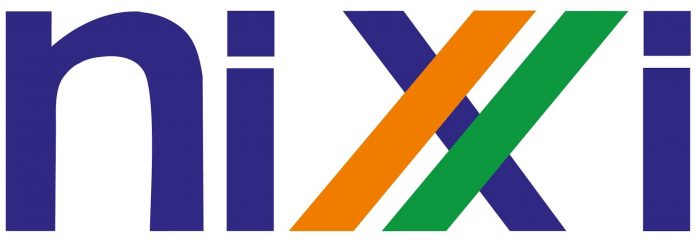Hello Folks!
In this blog, we will be talking about the National Internet Exchange of India (NIXI) along with its objectives and activities. We will also be discussing the three new initiatives which were recently launched by NIXI. So if you are interested in knowing all about this topic, then please read the blog till the end.
Let’s start by first knowing about the National Internet Exchange of India (NIXI).
About the National Internet Exchange of India (NIXI)
National Internet Exchange of India (NIXI) is a not-for-profit organization. It is under the Ministry of Electronics & Information Technology (MeitY). NIXI was set up for peering of ISPs among themselves for the purpose of routing the domestic traffic within the country. It has been working since 2003 for spreading the internet infrastructure to the citizens of India through the following activities:
- Internet Exchanges through which the internet data is exchanged amongst Internet Service Providers (ISP’s), Data Centers and Content Delivery Network (CDNs).
- .IN Registry, managing and operation of .IN country-code domain and .BHARAT IDN (Internationalized Domain Name) domain for India.
- Indian Registry for Internet Names and Numbers (IRINN), managing and operating Internet Protocol (IPv4/IPv6).
Objectives of National Internet Exchange of India (NIXI)
- To promote the Internet through effective and efficient routing, peering, transit and exchange of the Internet traffic within India.
- To Set up Internet Domain Name Operations and related activities.
- NIXI is also credited with localizing internet domains and encouraging websites to register with the .in address.
- To continuously work for enhancing and improving the quality of Internet and Broadband services.
Three New Initiatives of NIXI
The Ministry of Electronics and Information Technology (MeitY) has inaugurated three new initiatives of National Internet Exchange of India (NIXI). These three initiatives are – IP Guru, NIXI Academy, NIXI-IP-INDEX. They are primarily launched to facilitate adoption of IPv6 and create an environment for smooth transition from IPv4 to IPv6.
- IPv6 Expert Panel (IP Guru): It is a group to extend support to all the Indian entities who are finding it technically challenging to adopt IPv6. This expert group will be offering its services free of cost.This panel will guide all such Indian entities and help in increasing the IPv6 adoption. It’s a joint effort of the Department of Telecom (DOT), MeitY and industry. The expert panel group also comprises members from government and private organizations.
- NIXI Academy: It is created to educate technical/non-technical people in India to learn and relearn technologies. It will focus on technologies like IPv6 which are normally not taught in Educational Institutes. NIXI academy comprises an IPv6 training portal which is developed with the help of various technical experts to provide training. The easy-to-use platform helps network operators and educators understand networking best practices, principles and techniques. Through this academy our Internet community will be able to learn from various technical modules. Successful candidates (after passing the examination) can take a certificate from NIXI. The certificate will be useful to find/upgrade jobs in the Industry.
- NIXI-IP-INDEX: NIXI has developed an IPv6 index portal for the Internet community. portal will showcase the IPv6 adoption rate in India and across the world. It can be used to compare the IPv6 Indian adoption rate with other economies in the world. NIXI will populate this portal with web adoption in IPv6, IPv6 traffic etc. in coming days. This portal will motivate organizations to adopt IPv6 by providing inputs and technical data.
For those of you who are wondering what IPv4, IPv6 is and why there is a need to switch to IPv6. Don’t worry! We will be explaining these terms in detail.
IPv4 vs IPv6
Firstly, lets understand what IP stands for? ‘IP’ stands for ‘Internet Protocol’. It is a set of rules that dictate how data should be delivered over the public network (Internet). Now see the table below to understand the differences between IPv4 and IPv6:
| IPv4 | IPv6 |
| IPv4 Internet Protocol version 4 or IPv4 was the first major version of IP. It was deployed for production in the ARPANET in 1983. It is the most widely used IP version. It is used to identify devices on a network using an addressing system. The IPv4 uses a 32-bit address scheme. It is considered the primary Internet Protocol and carries 94% of Internet traffic. | IPv6 Internet Protocol version 6 (IPv6) is also called IPng (Internet Protocol next generation). It is the most recent version of IP. The Internet Engineer Task Force initiated it in early 1994. This new IP address version is being deployed to fulfill the need for more Internet addresses. It has the capability to provide an infinite number of addresses. It has 128-bit address space that allows 340 undecillion unique address space. It can easily accommodate the growing number of networks worldwide and help solve the IP address exhaustion problem. |
Transition from IPv4 to IPv6: Reasons and Benefits
- The current Internet Protocol (v4) lacks effective privacy and effective authentication mechanisms.
- IPv6 offers exponential address space which is practically inexhaustible in the foreseeable future. It therefore allows simple, seamless, and cost-effective connectivity for service providers, enterprises and end-users.
- This transition is especially important seeing the impending move to 5G which will definitely increase the usage of the internet.
- IPv6 has a privacy protocol to protect end-user privacy. The current internet (v4) lacks effective privacy and effective authentication mechanisms.
With this, we come to the end of this blog. We have tried to cover the major information related to the National Internet Exchange of India (NIXI). Not only this, we have also discussed the three new initiatives which were launched by NIXI recently. To make you understand the terminologies like IPv4 and IPv6, we have talked about them as well.
So this was all about today’s blog. We hope you enjoyed reading it!




